Meta-analysis identifies novel risk loci and yields systematic insights into the biology of male-pattern baldness
March 2017
in “Nature communications”
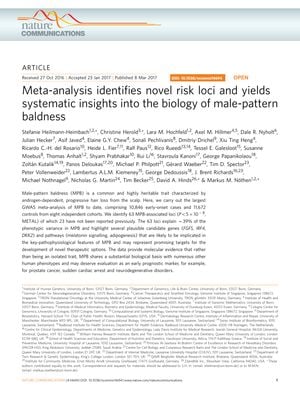
TLDR Researchers found 63 genes linked to male-pattern baldness, which could help in understanding its biology and developing new treatments.
In 2017, researchers conducted the largest genome-wide association study (GWAS) meta-analysis on male-pattern baldness (MPB) to date, involving 10,846 cases of early-onset MPB and 11,672 controls from eight different cohorts. They identified 63 genetic loci associated with MPB, 23 of which were previously undiscovered. These loci accounted for approximately 39% of the phenotypic variance in MPB. The study highlighted potential candidate genes and pathways, such as FGF5, IRF4, DKK2, melatonin signaling, and adipogenesis, which may play significant roles in MPB's pathophysiology and could be targets for new treatments. The findings also suggest that MPB may share underlying biological mechanisms with other conditions, indicating its potential as an early prognostic marker for diseases like prostate cancer, sudden cardiac arrest, and neurodegenerative disorders.
View this study on nature.com →
Cited in this study

research Differential Expression between Human Dermal Papilla Cells from Balding and Non-Balding Scalps Reveals New Candidate Genes for Androgenetic Alopecia
New genes found linked to balding, may help develop future treatments.

research Illness perception in patients with androgenetic alopecia and alopecia areata in China
Illness perception affects mental health and quality of life in Chinese alopecia patients.
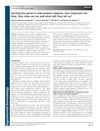
research Hunting the genes in male‐pattern alopecia: how important are they, how close are we and what will they tell us?
Genes play a significant role in male-pattern baldness, and understanding them could lead to new treatments and insights into related health issues.

research Persistent Sexual, Emotional, and Cognitive Impairment Post-Finasteride
Finasteride can cause lasting sexual, emotional, and cognitive issues, with varying severity.

research Hair, Hormones, and High-Risk Prostate Cancer
Men with a certain baldness pattern at age 40-50 may have a higher risk of aggressive prostate cancer.
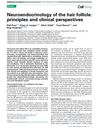
research Neuroendocrinology of the hair follicle: principles and clinical perspectives
Hair follicles are hormone-sensitive and involved in growth and other functions, with potential for new treatments, but more research is needed.

research Alopecia and its association with coronary heart disease and cardiovascular risk factors: A meta-analysis
People with alopecia are at higher risk for heart disease and have more heart-related risk factors.
research FGF5 is a crucial regulator of hair length in humans
FGF5 gene mutations cause unusually long eyelashes by affecting hair growth regulation.

research Potential targets in the discovery of new hair growth promoters for androgenic alopecia
The document concludes that targeting 5α-reductase, the androgen receptor, and hair growth genes, along with using compounds with anti-androgenic properties, could lead to more effective hair loss treatments.

research An Overview of Alopecias
The document explains different types of hair loss, their causes, and treatments, and suggests future research areas.

research Evidence for a polygenic contribution to androgenetic alopecia
Hair loss risk is influenced by multiple genes.

research Androgenetic Alopecia: Identification Of Four Genetic Risk Loci And Evidence For The Contribution Of WNT Signaling To Its Etiology
Four genetic risk spots found for hair loss, with WNT signaling involved and a link to curly hair.

research Androgenetic alopecia and risk of prostate cancer: A systematic review and meta-analysis
Vertex pattern hair loss linked to higher prostate cancer risk.
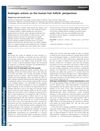
research Androgen actions on the human hair follicle: perspectives
Androgens have complex effects on hair growth, promoting it in some areas but causing hair loss in others, and our understanding of this is still evolving.
research Genome-wide association study identifies a new locus JMJD1C at 10q21 that may influence serum androgen levels in men
A new gene, JMJD1C, may affect testosterone levels in men.

research Six Novel Susceptibility Loci for Early-Onset Androgenetic Alopecia and Their Unexpected Association with Common Diseases
Six new genetic regions linked to early hair loss also connect to Parkinson's disease and prostate cancer, possibly leading to new treatments.

research Androgenetic alopecia as an early marker of benign prostatic hyperplasia
Early hair loss may indicate prostate issues.
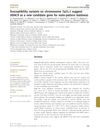
research Susceptibility variants on chromosome 7p21.1 suggest HDAC9 as a new candidate gene for male-pattern baldness
A gene called HDAC9 might be a new factor in male-pattern baldness.

research Adipocyte Lineage Cells Contribute to the Skin Stem Cell Niche to Drive Hair Cycling
Fat-related cells are important for initiating hair growth.

research Molecular basis of androgenetic alopecia: From androgen to paracrine mediators through dermal papilla
Male pattern baldness involves hormones and cell signals affecting hair growth.
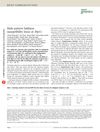
research Male-pattern baldness susceptibility locus at 20p11
Researchers found a new gene area linked to male-pattern baldness, which, along with another gene, significantly increases the risk of hair loss in men.
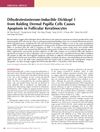
research Dihydrotestosterone-Inducible Dickkopf 1 from Balding Dermal Papilla Cells Causes Apoptosis in Follicular Keratinocytes
A substance called DKK-1 increases in balding areas and causes hair cells to die when exposed to DHT.

research The Hair Follicle as an Estrogen Target and Source
Estrogens significantly influence hair growth by interacting with receptors in hair follicles and may help regulate the hair growth cycle.

research Psychological Effect, Pathophysiology, and Management of Androgenetic Alopecia in Men
Minoxidil and finasteride can slow hair loss and stimulate regrowth, but won't restore all lost hair or reverse complete baldness.
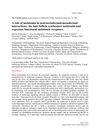
research A role of melatonin in neuroectodermal‐mesodermal interactions: the hair follicle synthesizes melatonin and expresses functional melatonin receptors
Hair follicles produce and respond to melatonin, affecting hair growth and sensitivity to estrogen.

research Genetic Variation in the Human Androgen Receptor Gene Is the Major Determinant of Common Early-Onset Androgenetic Alopecia
Genetic variation in the androgen receptor gene mainly causes early-onset hair loss, with maternal inheritance playing a key role.
research Epidermal Growth Factor as a Biologic Switch in Hair Growth Cycle
EGF controls hair growth by regulating hair follicles' growth phases.

research Molecular mechanisms of androgenetic alopecia
AGA causes hair loss by shrinking hair follicles due to DHT binding, and can be treated with finasteride and minoxidil.

research Improvement in the inflammatory aspect of androgenetic alopecia. A pilot study with an antimicrobial lotion
Antimicrobial lotion reduces inflammation and increases hair density in hair loss patients.